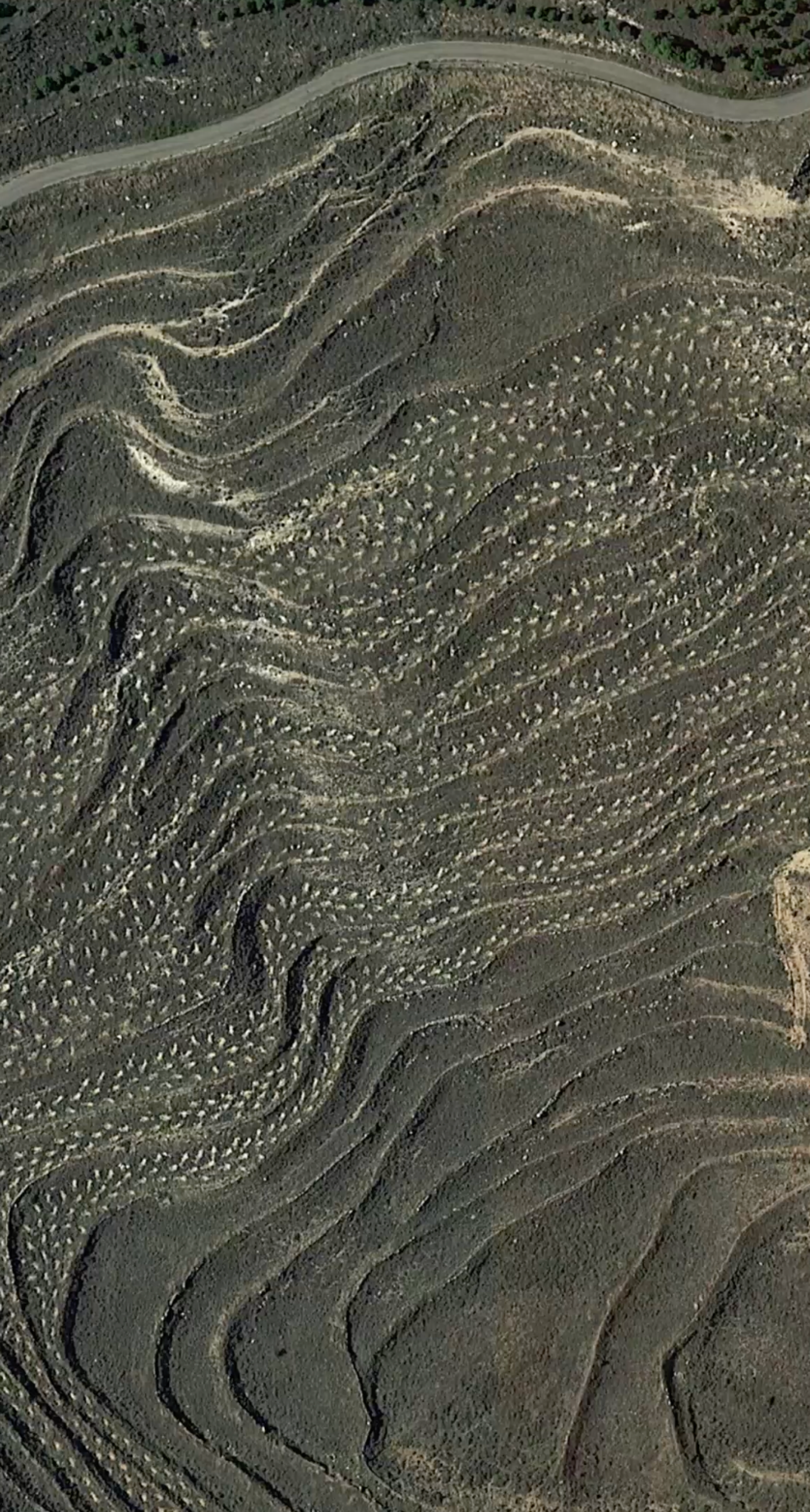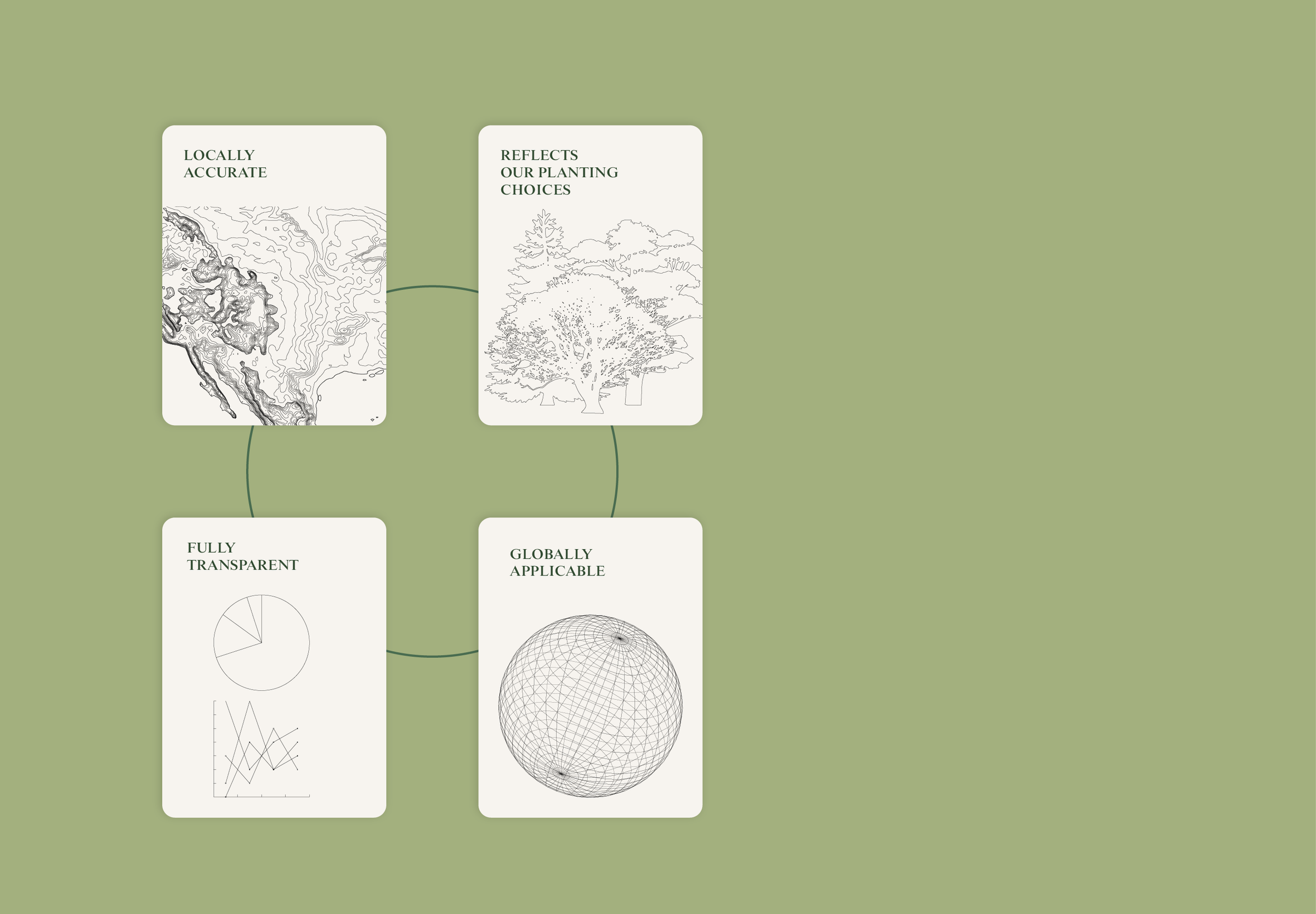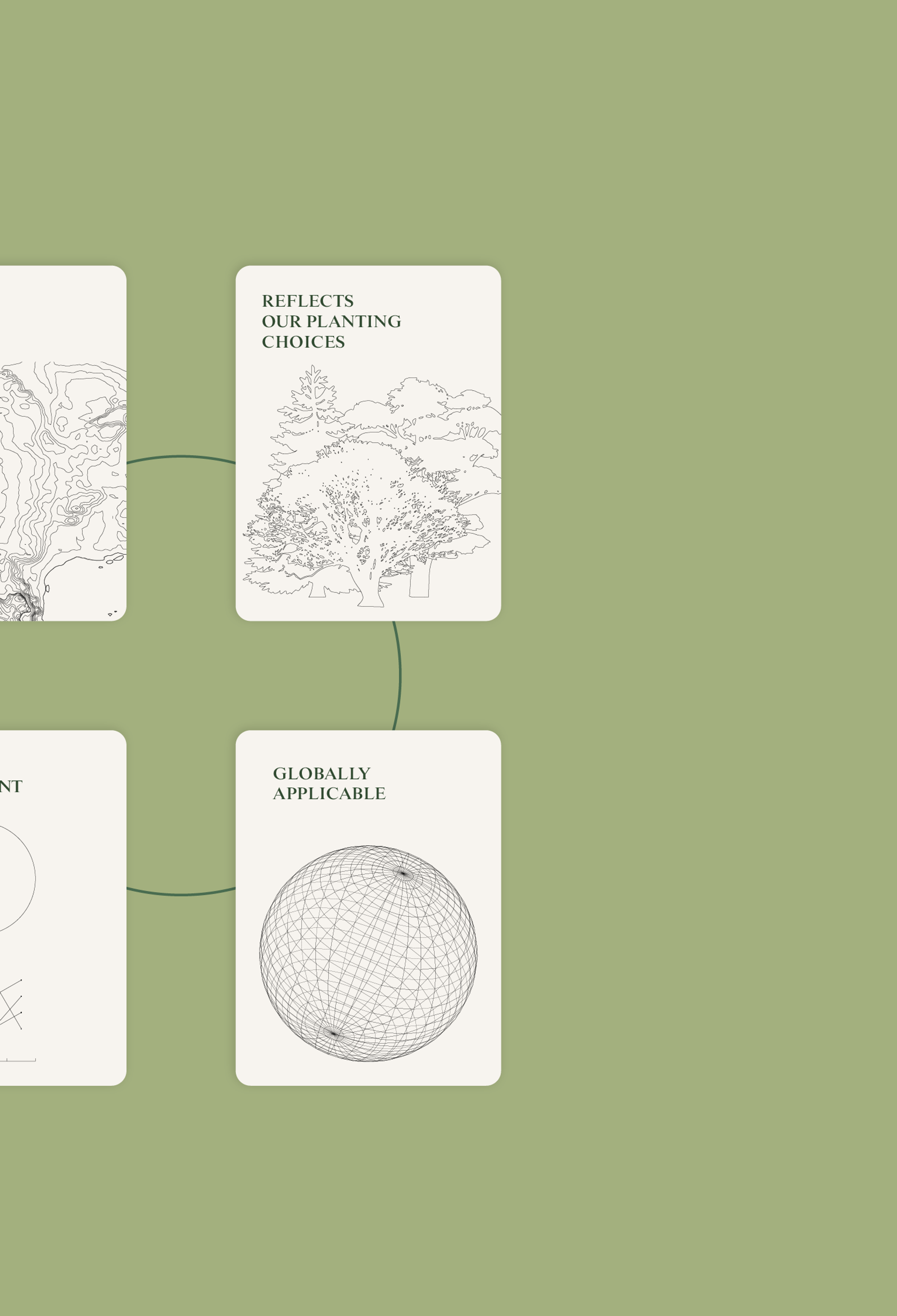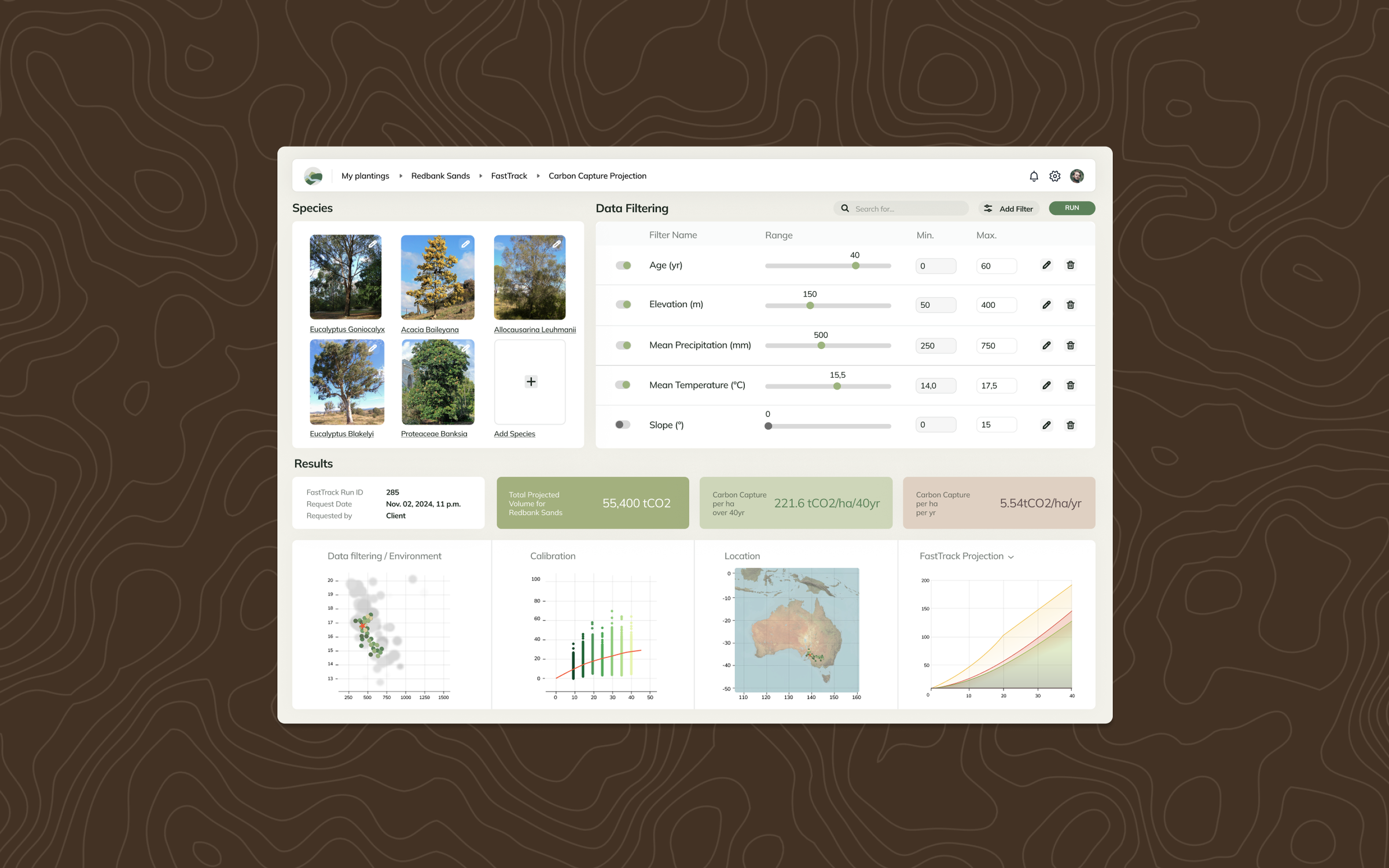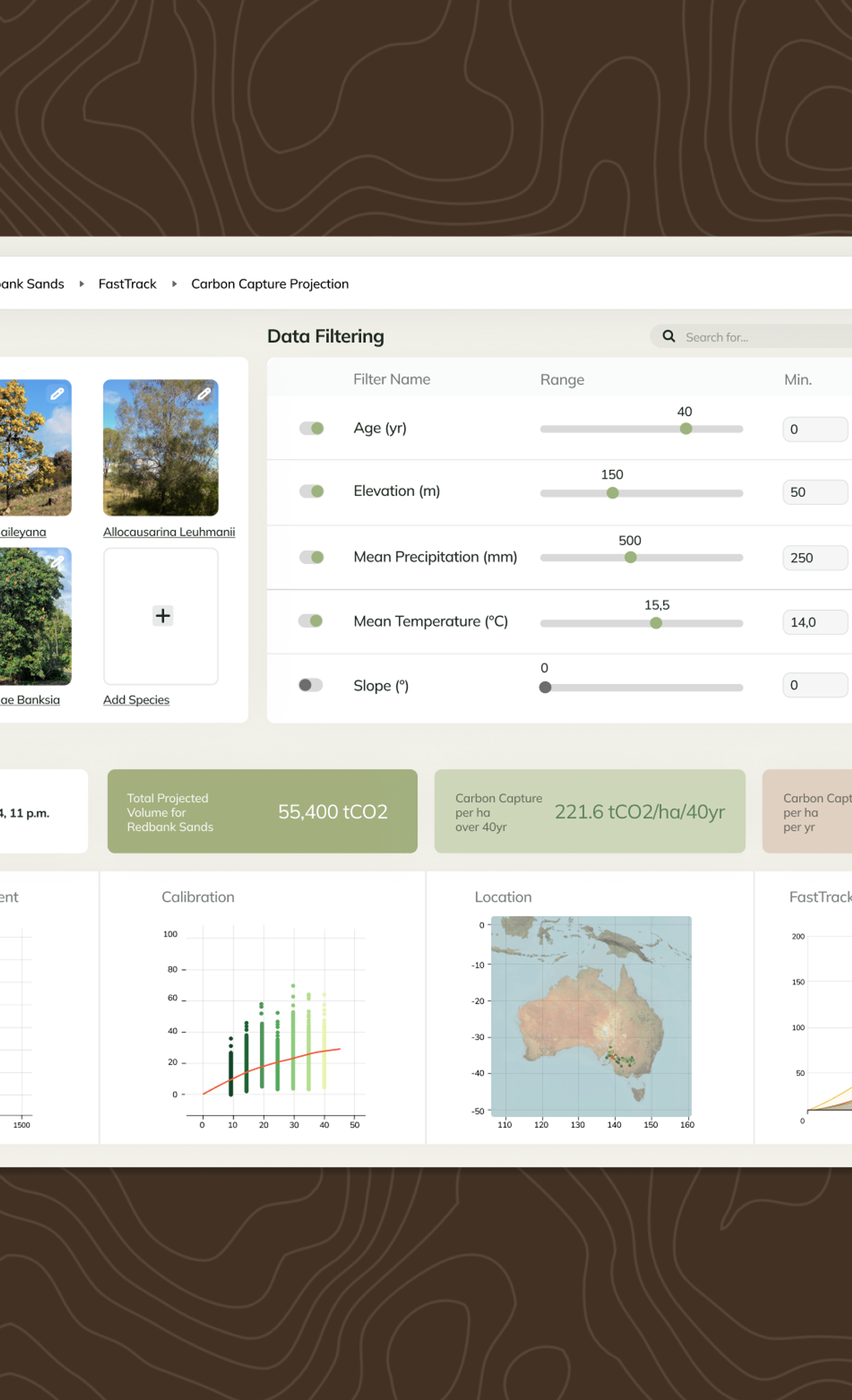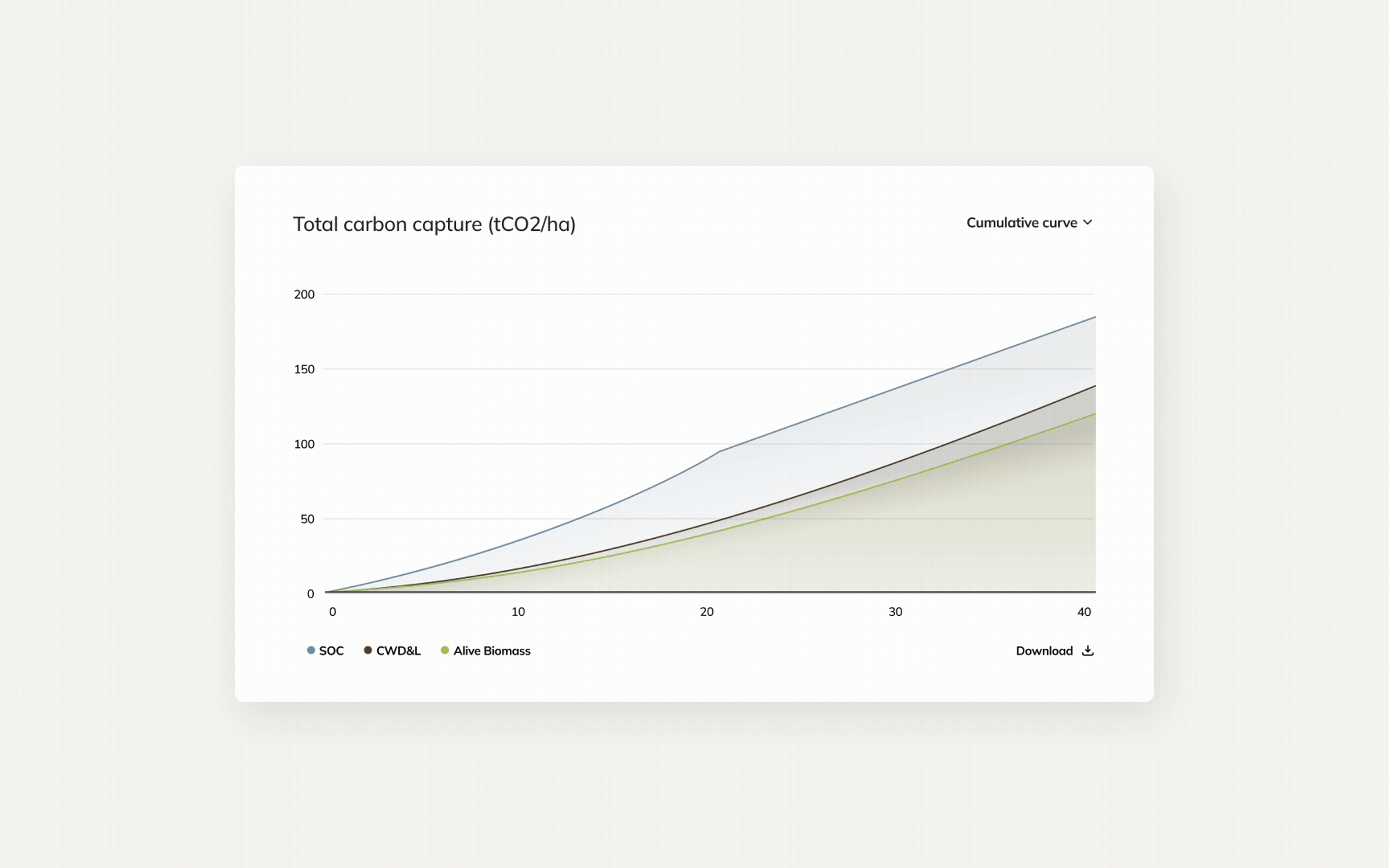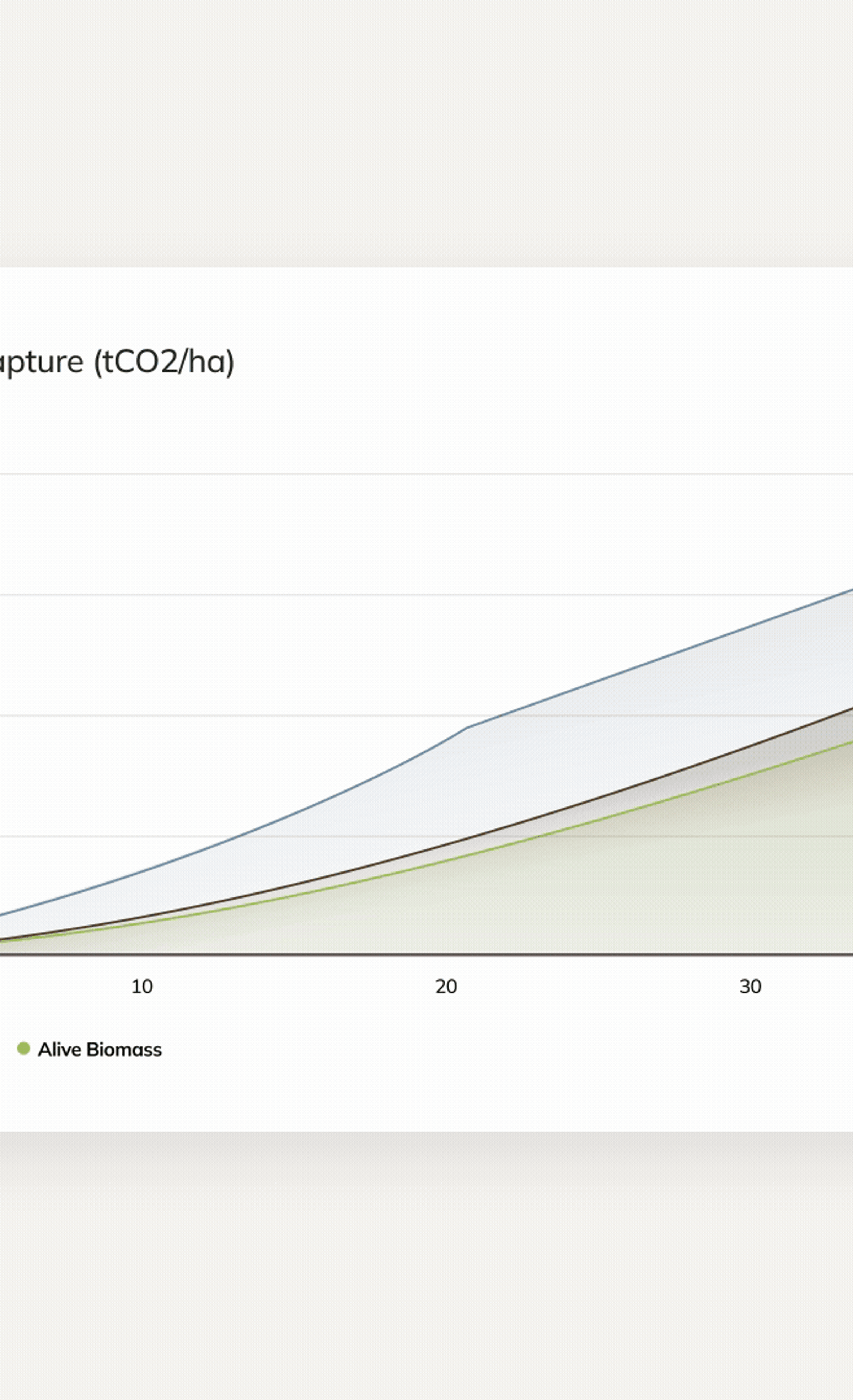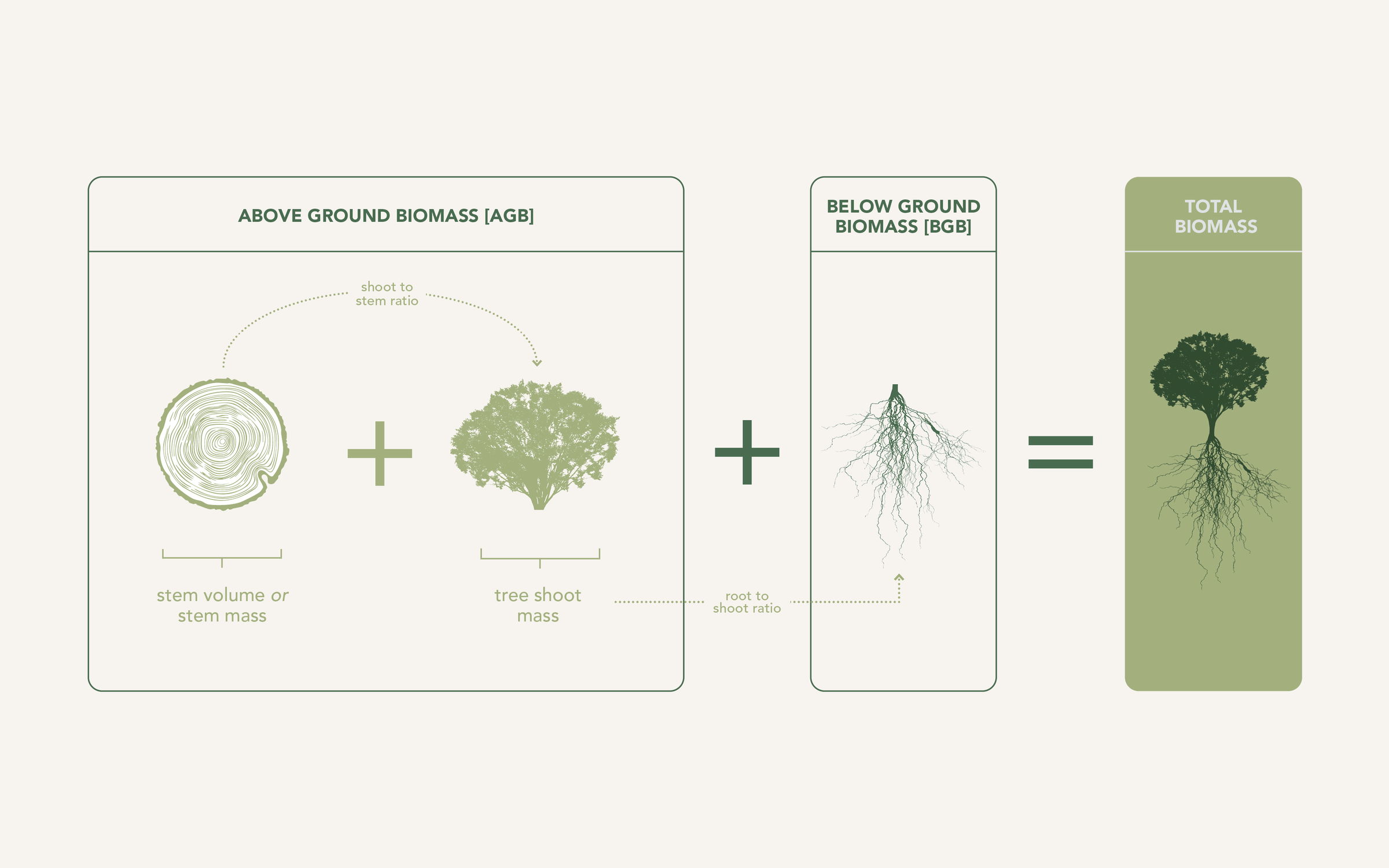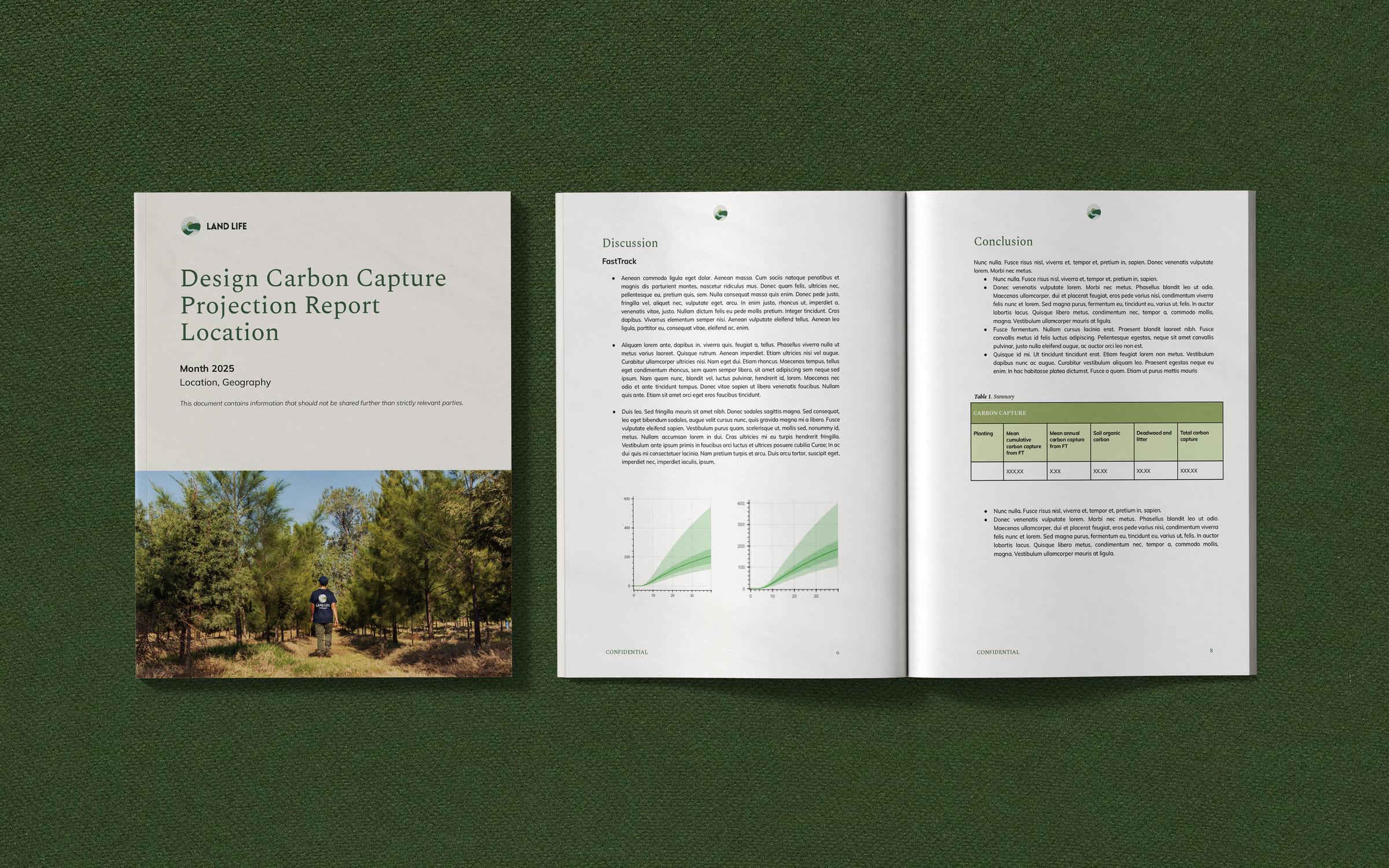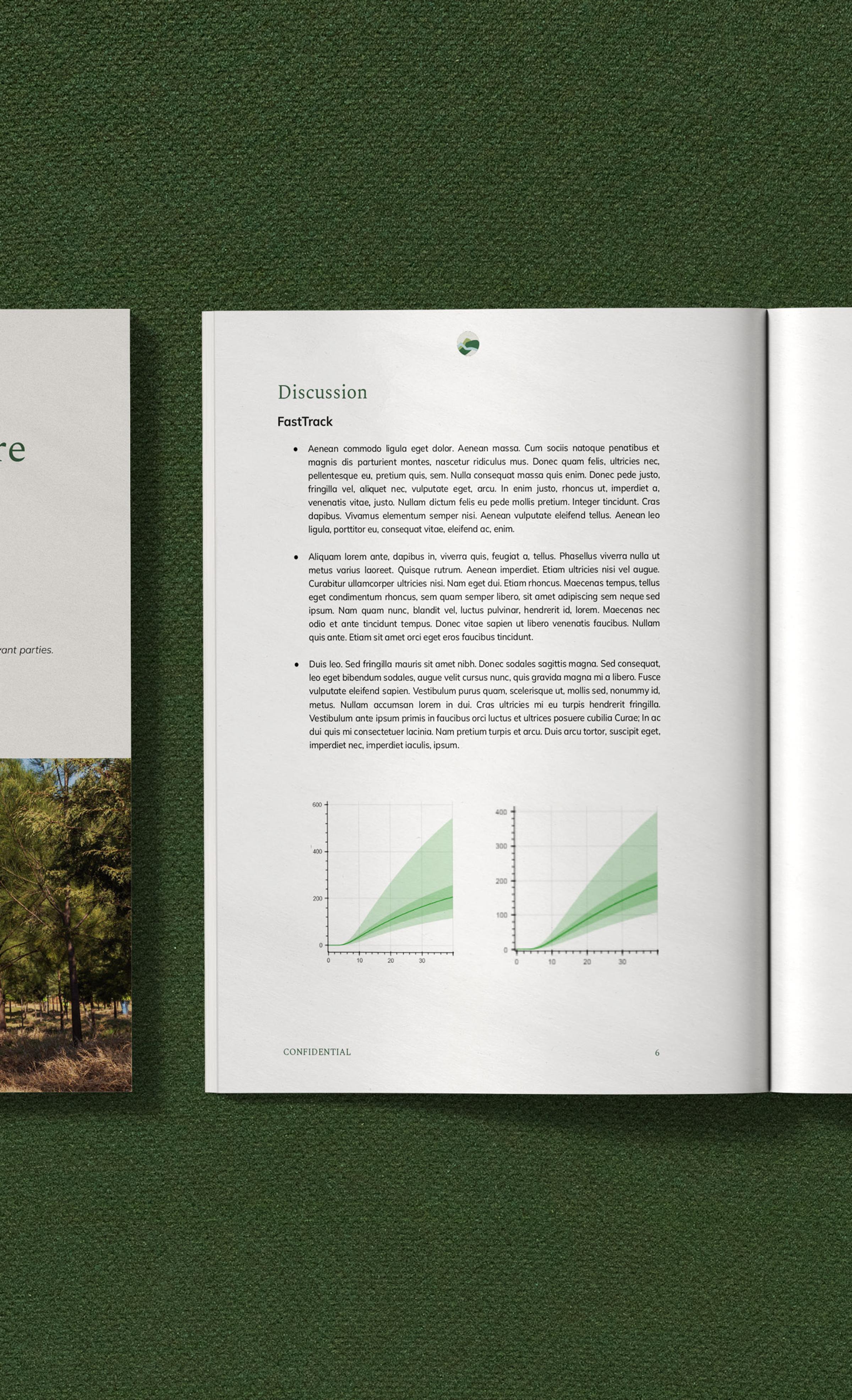Nature tech innovation raising the bar in carbon modelling
Land Life’s advanced carbon prediction model, FastTrack, is designed to bring credibility, accuracy and transparency to reforestation projects worldwide.
Built for local accuracy and global application, it helps ensure every tonne of carbon removed is real, measurable and backed by data.
Why accurate carbon modelling matters
At Land Life, we don’t just plant trees: we restore degraded land with native forests that bring back biodiversity, improve soil and capture carbon to mitigate climate change. But carbon benefits only matter if they are real, measurable and lasting. That’s where FastTrack comes in.
FastTrack is a model that forecasts carbon sequestration with high accuracy. It was developed to provide locally accurate CO2 accumulation forecasts for mixed-species planted reforestation projects, applicable globally. FastTrack uses publicly available national data from ecologically similar sites, filtering on environmental conditions and including tree species selected in our planting design.
Too often, reforestation projects rely on generic models that overlook the real complexity of landscapes, species mixes and site conditions. This makes it harder for landowners, buyers and communities to trust that projected benefits will truly materialise. FastTrack was developed to fill that gap – combining local specificity with scientific rigour. It’s not based on generic averages or simplified spreadsheets.
FastTrack is a science-based model that answers the carbon questions that matter most:
- How much carbon will a restored forest sequester over time?
- How do local species choices and site conditions shape that carbon potential?
- How can we be confident that the outcomes are transparent and backed by data?
- How is uncertainty accounted for in carbon forecasts?

